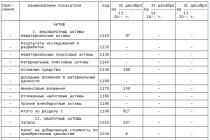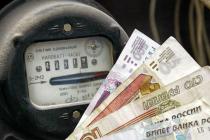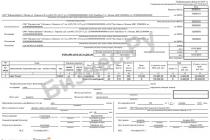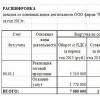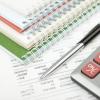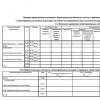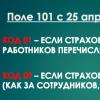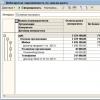The VAT calculator is the simplest and fastest way to calculate the amount of tax payable. If you do not know how to calculate VAT correctly, use our service. It is not necessary for a novice entrepreneur or an inexperienced accountant to delve into the intricacies of mathematical calculations. It is enough to enter the amount of income from which it is necessary to withhold, or the amount to which tax must be added.
How to calculate VAT (18%) for legal entities 2016 on a calculator
You are a representative of an organization and you want to understand how to charge VAT on an amount in order to include tax in the final price of the goods, or how to separate VAT from the existing amount. When using a calculator, perform the only action - enter the number in the line.
On the right, the allocated and accrued fee will appear, as well as the amount of the sale or purchase, with and without tax.
Since some goods are subject to 10% VAT, you can replace the value in the “tax rate” line.

Other numbers will immediately appear in the fields on the right.
Calculation of VAT for dummies. Popular questions.
What is this tax and what amounts are subject to it?
The state collects value added tax from organizations and entrepreneurs who sell goods, services, works, and import products through customs. To understand why this indirect fee is charged, let's look at what value added is. Value added is the difference between the purchase price of a product and the sale price. Income that is taxed. They are subject to advances received and the price of products that the company gives away for free (in this case, VAT must be calculated from the market value).
How to calculate VAT from the amount?
It is easier to understand with an example what is the allocation of VAT from the amount, and how to correctly calculate VAT.
You are an entrepreneur and you bought a product from a supplier for 118 rubles. Of these, 18 rubles is the amount of the fee at the rate of 18% that you paid, as it is included in the price of the goods. Without the collection, the purchase would cost 100 rubles. You want to sell this product for 150 rubles - with a 50% markup. To the cost you add 18% of the tax that the buyer of the goods will pay. 18% from 150 rubles - 27 rubles. So, you are selling goods for 177 rubles, including VAT. Your company does not pay the entire tax that it receives from the buyer to the budget. You need to pay from the part of the price that you put on the sale. Those 18 rubles that you paid to the supplier upon purchase are deducted from the final VAT of 27 rubles. The tax that you owe the state will be 27 - 18 = 9 rubles.
Who pays VAT?
In Russia, this tax is paid by all firms and entrepreneurs, except:
using USN;
using UTII;
those whose revenue per year is not more than 2 million rubles. (To be exempt from paying tax, submit an application to the Federal Tax Service).
What are the VAT rates?
There are 2 regular rates:
18% - main
10% - reduced
And one concession:
The most commonly used base rate is 18%.
A reduced rate of 10% applies to the sale of those types of goods that are listed in the law:
-
educational literature;
food products listed in Article 164 of the Tax Code of the Russian Federation;
some medical products;
tribal animals.
A preferential zero rate, like a ten percent rate, is used when selling goods, works and services from a clearly limited list (). One of the items on the list is export. The right to use the 0% rate is documented.
What is a settlement rate?
Sometimes the tax needs to be calculated from income with VAT already taken into account. Then the reverse method of calculation is applied according to the formulas:
These are the settlement rates 18/118 or 10/110.
Example: a company received an advance in the amount of 118 rubles, including VAT. The fee from such an advance is paid using the estimated rate and it will be: 118 * 18/118 = 18 rubles. In fact, the result in the calculation remains the same as when using the usual rate of 18%. The calculation formula will help you check whether you calculated the tax at the regular rate correctly.
There are seven cases when the estimated rate is used - they are listed in Article 164 of the Tax Code. The tax is calculated in this way only if the fee is already included in the amount of money received.
Estimated rates apply:
money that the company receives during the sale as financial assistance or to replenish the fund;
income in the form of interest for payment for products with promissory notes or bonds or in the form of interest that is higher than the main rate of the Central Bank;
income from insurance payments in case of non-fulfillment of obligations by partners.
When receiving funds for goods from the list of Article 162 of the Tax Code of the Russian Federation. This:
Upon receipt of advances for the forthcoming delivery or transfer of property rights;
Withholding VAT by tax agents;
When selling acquired property;
When selling agricultural products;
When reselling cars purchased from individuals;
When transferring rights to property under paragraphs 2-4 of Article 155 of the Tax Code of the Russian Federation.
What is a VAT deduction?
Deduction - the amount of tax that you paid when buying goods from a supplier. With the further sale of products at the price you set, you will pay tax minus this amount. At the same time, you must have papers from the supplier proving the purchase of products and payment of VAT included in the price. Confirmation - invoices. In addition to the amounts presented by suppliers, tax can be deducted (Article 171 of the Tax Code of the Russian Federation):
retained at importation at customs;
paid to the budget upon sale, if the buyer then refused and returned the goods;
paid in advance, if the contract is later terminated and the prepayment is returned;
presented by the contractor during capital construction or installation (dismantling) of fixed assets;
presented by suppliers of goods needed for the company's own construction needs;
paid to the budget during construction for the needs of the company;
transferred to the budget by tax agents;
paid in connection with travel or hospitality expenses;
paid for exports not previously confirmed by papers after confirmation;
paid from the value of the property included in the authorized capital.
How to calculate VAT (18%) for individual entrepreneurs
For individual entrepreneurs, it is calculated in the same way as for organizations. There is also no difference in the terms of payment - taxpayers submit a declaration and pay tax before the 25th day of the month following the reporting quarter.
VAT allocation formula used in the calculator
Here is the formula that is used in the VAT calculator. If you understand the principle, then you can do the calculation without the help of the service. Suddenly there is no Internet at hand?
To allocate VAT: divide the required value by 1 + 18% (this is 1.18), then subtract the original amount, multiply by -1 and round to the nearest kopeck.
Let's analyze the formula using our example: we select the amount at the rate of 18% from 118 rubles.
Calculating VAT on the required amount is even easier. If the amount of income without VAT is multiplied by 0.18, the amount of the tax itself is obtained, and if multiplied by 1.18, the cost of the goods, including tax.
Again, the simplest example: we charge 18% VAT on 100 rubles.



